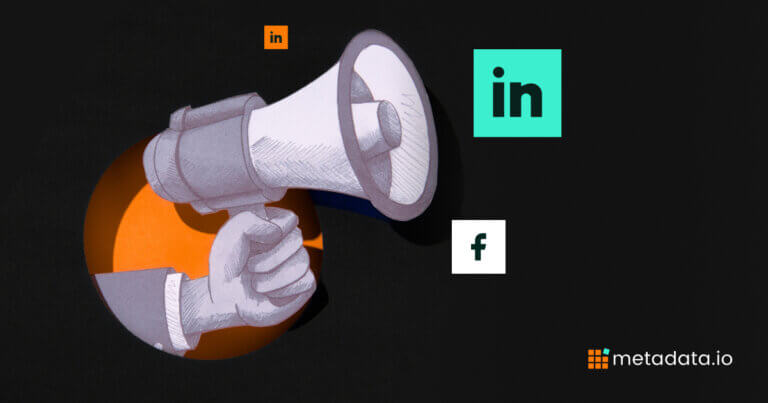3 Ways to Maximize Your Demand Gen Budget Fast
Just as CMOs and other marketing leaders started reaching into their pockets after more than two years of pandemic-restricted spending, they’ve hit another flaming hoop: uncertain macroeconomic conditions.
[Insert the collective sighs of marketers.]
Although marketing budgets have recovered slightly since bottoming out during the pandemic, many B2B marketing teams are still treading water as sales cycles slow, buyers put their projects on hold, and leadership teams go into fight-or-flight mode.
I’m going to say this loud for everyone in the back:
Slashing your marketing budget won’t save you.
Cutting it completely could even sink you.
Here’s why:
Marketers and leadership teams without strong stomachs are pausing their campaigns and demand generation efforts.
As they do, inventory and prices are dropping, which makes now a rare opportunity to extend your reach at a big discount.
Unfortunately, not everyone you talk to will see the opportunity in front of them, which is why so many marketing leaders are fighting tooth and nail to save their budgets.
Please, don’t do that.
Instead, look for ways to maximize it.
I promise it won’t sink you.
A study found that companies that focused on aggressive recession marketing grew during the 1980s recession by 256%, unlike those who slashed or eliminated their budget.
More recently, Pavilion released their August Benchmarking Survey, wherein they surveyed 200 Pavilion Executive members on their company performance in July 2022—and they found that an indicator of success was spending. They shared the following on LinkedIn:
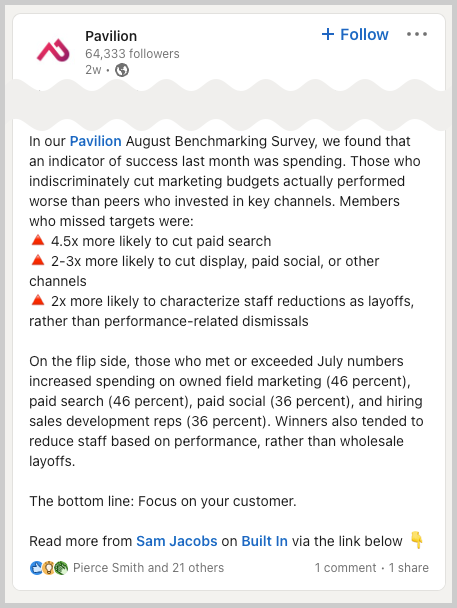
“Those who indiscriminately cut marketing budgets actually performed worse than peers who invested in key channels. Members who missed targets were:
- 4.5x more likely to cut paid search
- 2-3x more likely to cut display, paid social, or other channels
- 2x more likely to characterize staff reductions as layoffs, rather than performance-related dismissals
On the flip side, those who met or exceeded July numbers increased spending on owned field marketing (46 percent), paid search (46 percent), paid social (36 percent), and hiring sales development reps (36 percent).”
While I can’t promise triple-digit returns, the writing is on the wall: your marketing and demand generation efforts MUST stay on.
Here are the top 3 things you can do right now to maximize your demand gen budget:
1. Rank and segment your audience by ICP
If you could get every marketer in the world in one room, who’d you approach?
CMOs for companies with more than 500 people?
Media buyers with 10+ years of experience?
Fresh-faced Directors just starting at a new company?
It doesn’t have to be an actual person, like the CMO of Coca-Cola, but you should be able to paint a clear picture—like the CMO of a Fortune 500 company in the tech industry..
This painting is your ideal customer profile (ICP) and BFF when trying to maximize your budget without sacrificing pipeline.
Take this ICP and rank your audience into tiers.
The higher the rank, the closer they are to your ICP.
For example:
- Tier A – CMOs and VPs
- Tier B – Directors and Managers
- Tier C – Specialists and Individual Contributors
With these tiers in your back pocket, start building your audience based on the parameters that make up each.
Here’s an example of the sources you can use to build audiences in Metadata:
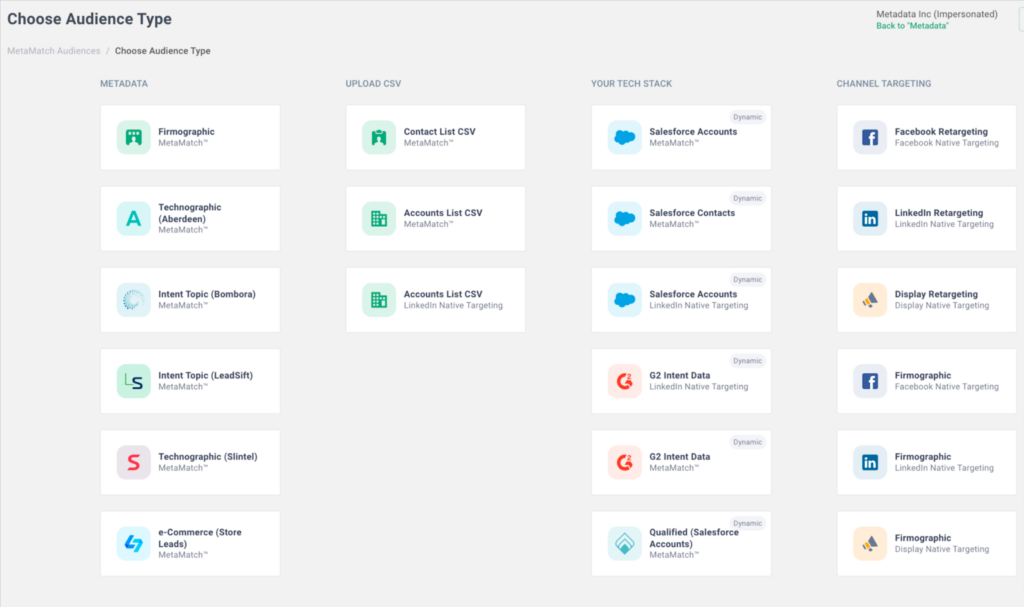
With these tiers, you can build laser-focused audiences across LinkedIn, Facebook, Google, and display that reach the eyes and screens of the people you want to see your ads. And, this will allow you to allocate more spend to higher valued Tiers/audiences systematically. That will allow you to bet more on higher valued audiences which could lead to higher conversion rates, meetings, and deals.
This structure will also give you a good vantage point into what messaging and offers are working by persona so you can make smart optimizations—or let Metadata automatically make them for you—to avoid wasting budget on underperforming campaigns.
2. Optimize your campaigns to revenue
Stop doing more.
Seriously.
Instead, look at your paid campaigns and see which ones drive the best results, pipeline and revenue.
Those campaigns are the ones you want to focus on as your budget sits on the hot seat.
To do this, pull a closed-won opportunity report from your CRM that dates back for at least two quarters.
Even better, take your average sales cycle and multiply it by two. That’s how far back you should look.
So, for example, if your sales cycle is 90 days, pull closed-won opportunities for the past 180 days.
Then, sort that report by the source to determine where most of your deals are coming from, e.g., Facebook, LinkedIn, etc.
At the same time, pull a broad opportunity report (same as above) and sort by marketing-sourced deals.
Once you have these reports, look at your CRM (customer relationship management) and MAP (marketing automation platform) data to determine which campaigns drive more bottom line.
For campaigns that aren’t carrying their weight, either figure out why or cut the fluff and move on. (Some tools, like Metadata, will do this for you. Metadata even shows you which specific ad has resulted in triggered opportunities and revenue, making attribution crystal-clear.)
Don’t be afraid to be ruthless and pause underperforming campaigns. Your efficiency matters now more than ever. When times are tough and CEOs are looking for every opportunity to save a few bucks, every dollar must go toward creating something real for the business.
If you have campaign UTMs (hopefully, standardized ones) mapped to opportunities in your CRM, look there and pull reports to see which campaigns are driving closed-won deals.
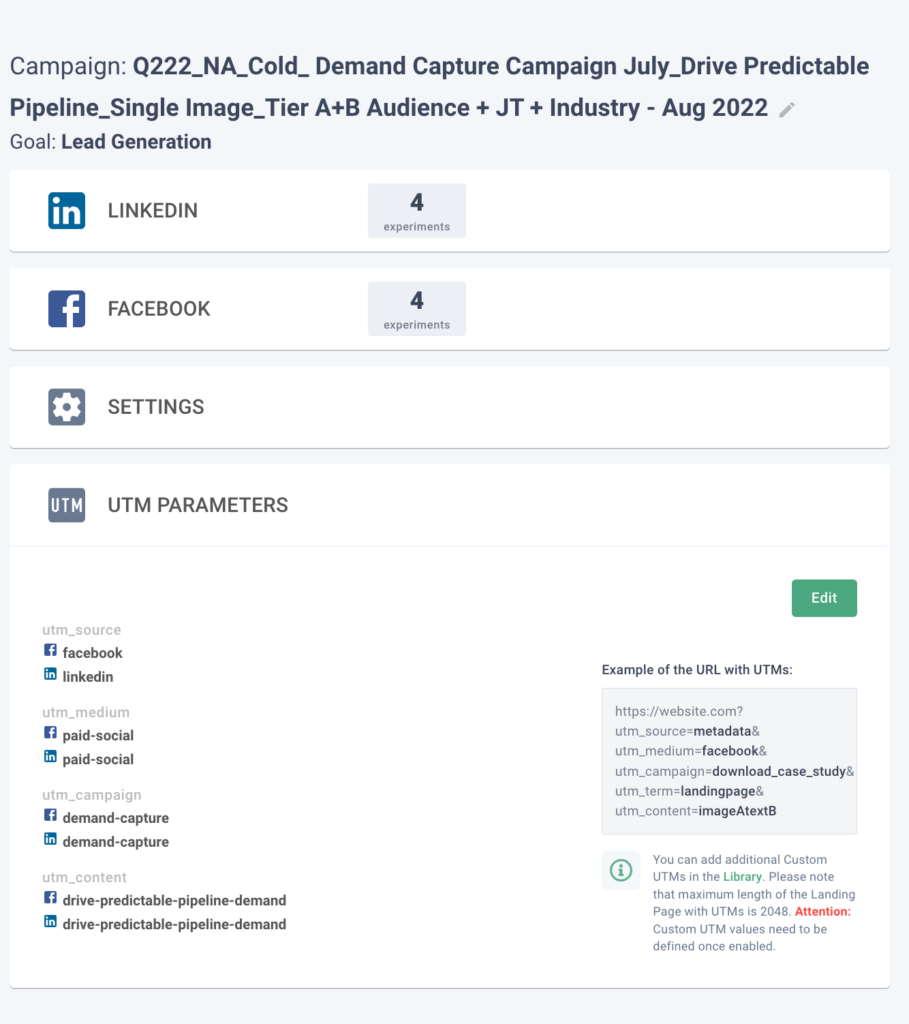
If you don’t have these, you can tie the opportunities back to paid campaigns with your MAP data.
For example, pull a drill-down report in HubSpot to help associate deals with the right UTMs and campaigns.
This may require some manual effort, but it’s worth it. Trust me.
3. Leverage automation & alerts to keep campaigns from overspending
Once you find your high-performing campaigns, it’s time to understand your ideal CPL (cost per lead).
To calculate CPL, divide the cost to generate leads (typically total ad spend) by the number of leads.
(Cost of to Generate Leads/Total Number of Leads = Cost per Lead)
So, if you generated 1,000 leads from a campaign that cost you $50,000, your CPL would be $50.
What the heck is a “good” CPL?
Asking someone what a good CPL is like asking them if Coke is better than Pepsi or if creamy peanut butter is superior to its crunchy counterpart.
It’s subjective.
The same goes for your CPL.
A good CPL is one that’s helping you grow your business. (And keep in mind that other factors play into your funnel, so this is just one metric to keep a pulse on when maximizing your ad spend.)
If that’s not good enough, determine your “break-even” CPL, which will show you how high you can go without losing money.
How to calculate your “break-even” CPL?
To calculate your break-even CPL, pull data on marketing-sourced revenue from the last two months and divide it by the number of leads generated.
So, if you’re attributing $1mm in closed-won revenue for your campaigns from the last two quarters and drove 500 leads, then your break-even CPL would be $2,000.
Once you know this, use tools like Shape.io to set guardrails and alerts for your ad spend, which can help stop overspending by pausing specific campaigns when their max CPL is met.
You can also do this with Metadata by using pre-built settings that allow you to pause your campaigns automatically—or by specific groups—based on max CPL spend, max click threshold, and day decays.
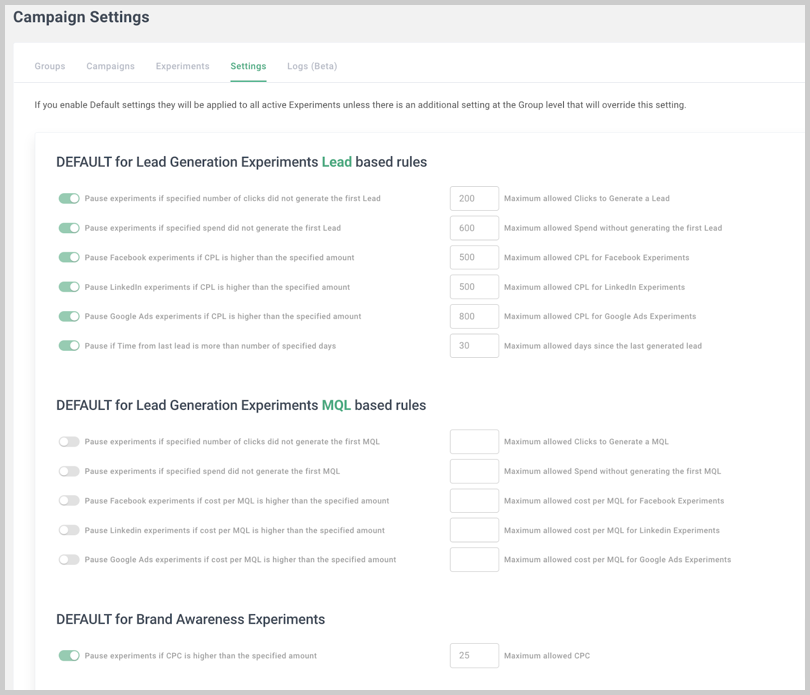
Double Down On What’s Working, Cut The Rest
You’d think after the past few years that marketing teams would get a break.
Unfortunately, the “do more with less” conversation will likely carry on. This outside pressure will continue to force marketers to take a closer look at their demand generation efforts and find efficiencies.
The trick is to find ones that won’t diminish pipeline and the impact these efforts are having on the company’s bottom line.
Segmenting your audience by ICP, optimizing your campaigns to pipeline, and using automation and alerts are three ways that’ll help you weather the world’s latest storm to maximize your marketing budget.


